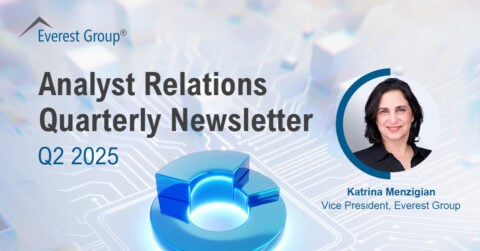
Despite the fact that Wipro announced its acquisition of SAIC’s oil and gas IT services business on April Fool’s Day, the deal will be far from prankish silliness if the integration of two fundamentally different cultures and business models is managed correctly. Here are three key reasons we give this acquisition a thumbs up:
Stronger appeal to clients in the energy industry, and separation from its Indian provider peers
Wipro is already the largest offshore Tier 1 provider in the energy and utilities sector in revenue terms, and the acquisition will provide it with broader and deeper consulting, technology, and outsourcing capabilities in the upstream business, and enhanced service capabilities in areas including digital oilfields, exploration, and production data management. The deal brings into Wipro’s capabilities a pool of onshore domain experts — nearly 1,500 — with presence in major oil and gas markets in North America, Europe and the Middle East. The acquisition should also help Wipro upshift current offshore-based ADM service delivery clients, enable up-sell and cross-sell to higher value/high margin services, and allow penetration of the SAIC client base to drive growth per an offshore-centric delivery model. The bottom line is that the acquisition will enable Wipro to demonstrate a strong, differentiated play for oil and gas clients across the entire value chain.
An affirmation of its intent to further differentiate in areas of existing strength
Let’s face it . . . 2010 was not a great year for Wipro. With financial fraud and the sub-par financial and operating performance that resulted in the ouster of its joint CEOs, there was significant conjecture on whether or not Wipro could remain competitive and regain a place among the Tier 1 Indian providers. The acquisition not only demonstrates Wipro’s commitment to investments in growth, but also should help quell concerns about the company’s future, especially for energy industry clients. Perhaps most importantly, the acquisition gives Wipro the deep domain expertise differentiation play that is becoming increasingly important for offshore providers. This should enable Wipro to both win new business and increase the size and scope of its work within existing Wipro and SAIC accounts.
Enhanced revenue growth via its earlier inorganic strategy
Major acquisitions and inorganic growth — including its purchase of acquisition of Infocrossing in 2007 and Citibank’s IT captive in late 2008 — have been a large part of Wipro’s revenue growth strategy. Lacking any large acquisition in the last couple of years has negatively impacted its comparative peer performance. But the SAIC acquisition will enable a revenue upside of at least US$150 million — assuming a revenue multiple of 1 — which will reflect in Wipro’s next financial year which ends on March 31, 2012.
Assuming this all plays out the way we think it can, we do believe the SAIC acquisition can significantly widen the gap between Wipro and the other Tier 1 offshore majors in the energy vertical.
Everest Group just released a Breaking View point on this acquisition. If you’re interested in more drill-down insights on this deal, please go to: Wipro’s Fool’s Day Acquisition of SAIC’s Oil & Gas IT Business – The Energy Pill Wipro Needed?











